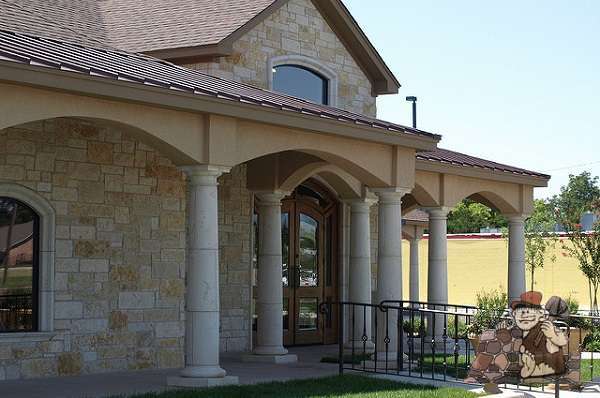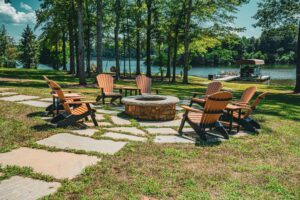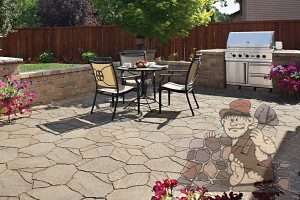Manufactured stone, is a manmade, decorative stone made with cement, natural iron oxide pigments, and lightweight aggregates. The concrete mix is molded and colored to simulate the look and feel of natural stone. The use of lightweight aggregates makes it much lighter than natural stone. Because it is lightweight, it is easy to handle and install.
The Development of Manufactured Stone
Stone has been used in construction for centuries. If you were to tour the castles of Europe, you might see some of the stone structures from the 1200s still standing. Stone construction is durable.
If you were to look at many of the buildings constructed prior to the 1900s, you’d see foundations, fireplaces, chimneys, and exterior accent features built with natural stone. By the mid-1900s, building methods improved and natural stone became more of a luxury. It was heavy, expensive, and time-consuming to use.
As the market became more adaptable to other construction materials, manufactured stone became popular as an alternative building material. Today it provides a remarkably realistic rock look that it is widely used in interior and exterior applications.
How It Differs from Natural Stone
Manufactured stone, faux stone, architectural stone, cultured stone – the list continues but they all are the same. They are derived from a mold and made to look like real stone. So how does it differ from natural stone?
Manufactured stone is a decorative alternative to natural stone. Besides being lightweight, color is a great advantage because it comes in a variety of designs and colors not available in natural stone. The lightweight characteristics are also advantageous. It can be used in places where a building’s structure can’t handle the weight of natural stone.
Contractors know when and how to use manufactured stone to their best advantage versus natural stone. The contractor’s experience with using different materials is key to providing your project with beautiful, quality construction.






